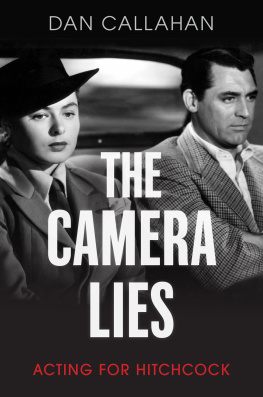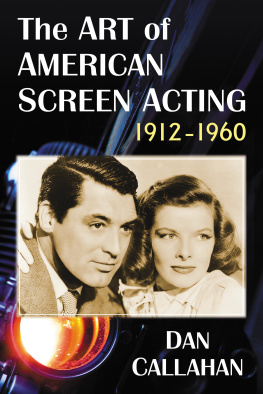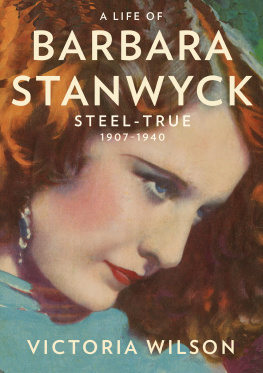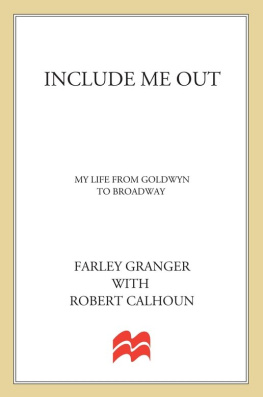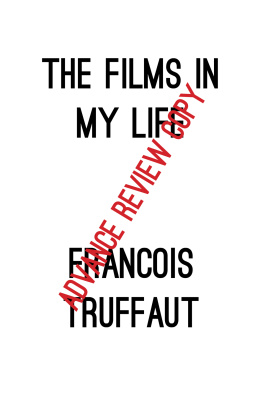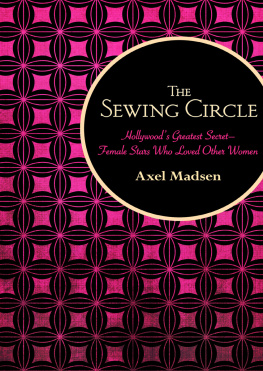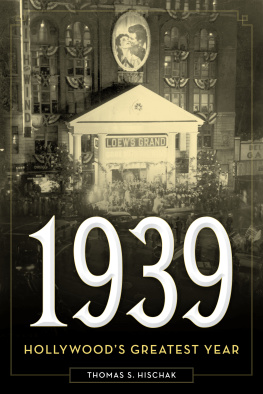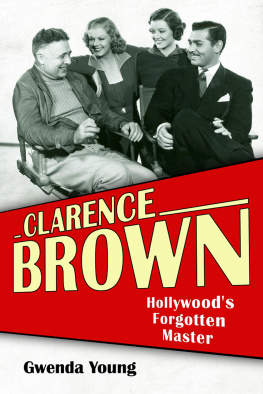Barbara Stanwyck
HOLLYWOOD LEGENDS SERIES
CARL ROLLYSON, GENERAL EDITOR

Barbara Stanwyck
THE MIRACLE WOMAN
DAN CALLAHAN

www.upress.state.ms.us
The University Press of Mississippi is a member of the Association of
American University Presses.
Unless otherwise noted, photographs are from the authors collection.
Copyright 2012 by Dan Callahan
All rights reserved
Manufactured in the United States of America
First printing 2012
Library of Congress Cataloging-in-Publication Data
Callahan, Dan, 1977
Barbara Stanwyck : the miracle woman / Dan Callahan.
p. cm. (Hollywood legends series)
Includes bibliographical references and index.
ISBN 978-1-61703-183-0 (cloth : alk. paper) ISBN 978-1-61703-184-7
(ebook) 1. Stanwyck, Barbara, 19071990. 2. Motion picture actors and
actressesUnited StatesBiography. I. Title.
PN2287.S67C36 2012
791.43028092dc23
[B] 2011021567
British Library Cataloging-in-Publication Data available
To Keith Uhlich
CONTENTS
Barbara Stanwyck
INTRODUCTION
This book is a heartfelt appreciation of Barbara Stanwycks work in movies. While there have been many studies and biographies on female film stars of equal staturestars like Bette Davis, Katharine Hepburn, Joan Crawford, Marlene Dietrich, and Greta Garbocomparatively few books about Stanwyck have appeared. Of these, Al DiOrios mid-eighties biography is small but serviceable, while Axel Madsens 1994 biography paints a grim, insensitive picture of Stanwycks personal life, relies heavily on gossip, and pays only cursory and inexact attention to her films. Back in 1974, Ella Smith brought out Starring Miss Barbara Stanwyck, which is stuffed with evocative photos and features an insightful analysis of Stanwycks acting, along with helpful interviews with many of the people who worked with Stanwyck, most of whom sing her praises. That book was written while Stanwyck was still alive, and it was meant as a tribute that would please her; for all its fine writing and detail, it doesnt have the long-range perspective that is possible now.
This book includes sections about Stanwycks personal life, and I will sometimes indulge in educated guesses about this shadowy subject. These guesses are by definition speculative and hopefully open enough to allow you to make up your own mind about her off-screen existence. The main event for me, though, is Stanwycks films and her work in them. Youll find little of the usual filler about Hollywood at the time, who might have said what to whom at the Coconut Grove, or how much money Stanwyck made for each project. I see Stanwyck as a major artist, and I want to show you the nitty-gritty of what she accomplished and how she managed to accomplish it.
Stanwyck collaborated with some of the finest directors of her time: from Frank Capra, William Wellman, William Dieterle, George Stevens, John Ford, King Vidor, and Mitchell Leisen in the thirties; to Preston Sturges, Howard Hawks, Billy Wilder, Andr de Toth, and Robert Siodmak in the forties; to Anthony Mann, Fritz Lang, Douglas Sirk, and Sam Fuller in the fifties; to Jacques Tourneur and Joseph H. Lewis on TV in the sixties. She was never tied to one studio, which is why she had more freedom in picking properties, and, unlike many of her contemporaries, she found herself in ever more adventurous company in the movies as she got older. There hasnt been enough analysis of her directors and her films themselves as a whole. For instance, the earlier Stanwyck books dismiss her two seminal films with Sirk outright. I hope that my book can help to open up discussion on her best movies and offer you a close, in-depth reading of her gifts and the varied, inventive ways she put them to use.
Orphan of the Storm
The Locked Door, Mexicali Rose
Barbara Stanwyck had a hard childhood, thats certain. She didnt linger over it, and Im not going to, either, but its worth mulling over some of the available information and considering what it might tell us about her. Well never be sure just how hard this childhood was and what experiences might have scarred her for life. In his memoir, Robert Wagner writes that he thought she had been abused in some way, and maybe she was abused in all ways imaginable. When pressed about this issue late in life, Stanwyck put on her toughest mask and said, Alright, lets just say I had a terrible childhood. Lets say that poor is something I understand. The distinctive Stanwyck note of fast-talking, moving right along blitheness and bitterness is right there in that Alright, as if shes just going to level with you, and the repetition of lets just say as lets say, which has the same effect as that wonderful little shrug she did in so many of her middle and late period films.
She was born Ruby Stevens on July 16, 1907, in Brooklyn, at 246 Classon Avenue. Stanwyck wouldnt recognize the old neighborhood now. I live in Park Slope, Brooklyn, and Classon Avenue is within walking distance of my house, so I ventured out on a snowy day to see what was left of her past, only to discover that the house wasnt there anymore. In its place is the Pratt Institute, an architectural and design college. Ruby Stevens never even made it to high school, but not many people of her class and generation did in those days, and college was out of the question.
She was the fifth child of Byron and Catherine McGee Stevens of Chelsea, Massachusetts. Byron was English and Catherine was Irish. Theres a lot of the Irish about Stanwyck; Hemingway met her on a hunting trip with her second husband, Robert Taylor, and commented on her good tough Mick intelligence. In 1905, Byron abandoned Catherine and his growing family to do some bricklaying in Brooklyn. Catherine chased after him, and Byron was apparently not happy when she found him. Their first four children all had names beginning with the letter M: Maud, Mabel, Mildred, Malcolmand then little Ruby, the special child, the gem, born in Brooklyn on Classon Avenue. A photo of Ruby at two years old shows a very unhappy-looking toddler; her entire head seems to frown protectively, as if shes saying, Please dont hurt me.
In the winter of 190910, Catherine, pregnant again, was knocked off a streetcar by a drunk and hit her head. A month later, she died. Two weeks after the funeral, Byron went off to help dig the Panama Canal. Little Ruby was left in the care of her sister Millie, who was making her living as a chorus girl ([S]he didnt pay much attention to me, said Stanwyck), and her brother Malcolm, whom they called Byron, after their absent father. When Millie went on the road, Byron and Ruby were placed in foster care. In later life, Stanwyck strived to remain objective about this eventuality, too, saying that the foster care system wasnt cruel, just impersonal. At the beginning of Axel Madsens unreliable Stanwyck biography, he tells an unattributed story about Ruby repeatedly running away from foster care and always heading back to 246 Classon Avenue, where her brother Byron would find her sitting on the steps, waiting for her mother to come home.
Its a haunting image. Trying to picture it in my head, Im reminded less of the sort of Hollywood tearjerkers Stanwyck made in the thirties and more of the unloved little girl in Robert Bressons Mouchette (1967), an awkward, rough kid so totally on her own that she freezes any sentimental impulse, any inclination toward tears. If Stanwyck really was that abandoned little girl, mired in poverty, always waiting for her dead mother at 246 Classon Avenue, surely the seasoned pro she became would not want us to cry for her. She had to get tough and stay tough, and she did, but the well of permanent hurt inside her would remain as pure in
Next page

